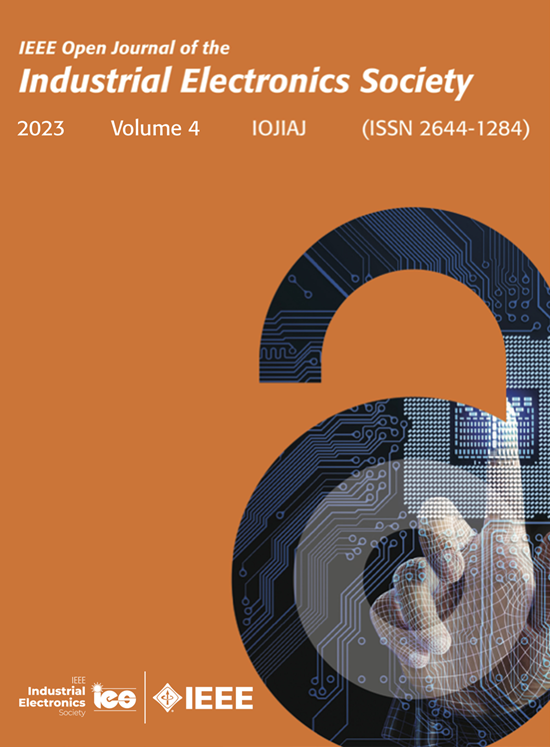用于新型全人工心脏的具有增强干扰抑制功能的线性旋转位置控制系统
IF 5.2
Q1 ENGINEERING, ELECTRICAL & ELECTRONIC
IEEE Open Journal of the Industrial Electronics Society
Pub Date : 2024-04-08
DOI:10.1109/OJIES.2024.3385865
引用次数: 0
摘要
目前,维也纳医科大学、苏黎世联邦理工学院动力电子系统实验室和柏林夏里特大学正在合作研发一种新型植入式全人工心脏(以下简称 ShuttlePump)。其新颖、低复杂度、脉冲式泵送原理要求一个特殊形状的活塞在提供必要的液压力和扭矩的同时,执行受控、同步的线性旋转运动。作者在之前的工作中对基于永磁同步电机(PMSM)的线性旋转执行器进行了机器设计,最终构建了一个硬件原型,满足了机电力、扭矩、功率损耗和体积方面的应用要求。本文详细介绍了操作 ShuttlePump 所需的闭环线性旋转位置控制系统。位置控制系统的设计目标是在高达 45 N 的轴向液压负载力带来的严重干扰下,在高达 5 Hz 的工作频率下实现紧密的参考跟踪(8 mm 线性行程和连续旋转)。实验测量显示,在指定的轴向负载下,线性旋转位置跟踪成功,最大误差为 1 mm 和 5$^{\circ }$。本文章由计算机程序翻译,如有差异,请以英文原文为准。
Linear-Rotary Position Control System With Enhanced Disturbance Rejection for a Novel Total Artificial Heart
A novel implantable total artificial heart, hereinafter referred to as the
ShuttlePump
, is currently under development in a research collaboration between the Medical University of Vienna, the Power Electronic Systems Laboratory of ETH Zurich and Charite Berlin. Its novel, low-complexity, pulsatile pumping principle requires a specially shaped piston performing a controlled, synchronized linear-rotary motion while providing the necessary hydraulic force and torque. The machine design of the Permanent Magnet Synchronous Machine (PMSM)-based linear-rotary actuator was conducted in previous work of the authors, leading to the construction of a hardware prototype satisfying the application requirements in terms of electromechanical force, torque, power losses, and volume. This article provides the details of the closed-loop linear-rotary position control system required to operate the
ShuttlePump
. The design of the position control system targets tight reference tracking (
$\pm$ $^{\circ }$
求助全文
通过发布文献求助,成功后即可免费获取论文全文。
去求助
来源期刊

IEEE Open Journal of the Industrial Electronics Society
ENGINEERING, ELECTRICAL & ELECTRONIC-
CiteScore
10.80
自引率
2.40%
发文量
33
审稿时长
12 weeks
期刊介绍:
The IEEE Open Journal of the Industrial Electronics Society is dedicated to advancing information-intensive, knowledge-based automation, and digitalization, aiming to enhance various industrial and infrastructural ecosystems including energy, mobility, health, and home/building infrastructure. Encompassing a range of techniques leveraging data and information acquisition, analysis, manipulation, and distribution, the journal strives to achieve greater flexibility, efficiency, effectiveness, reliability, and security within digitalized and networked environments.
Our scope provides a platform for discourse and dissemination of the latest developments in numerous research and innovation areas. These include electrical components and systems, smart grids, industrial cyber-physical systems, motion control, robotics and mechatronics, sensors and actuators, factory and building communication and automation, industrial digitalization, flexible and reconfigurable manufacturing, assistant systems, industrial applications of artificial intelligence and data science, as well as the implementation of machine learning, artificial neural networks, and fuzzy logic. Additionally, we explore human factors in digitalized and networked ecosystems. Join us in exploring and shaping the future of industrial electronics and digitalization.
 求助内容:
求助内容: 应助结果提醒方式:
应助结果提醒方式:


